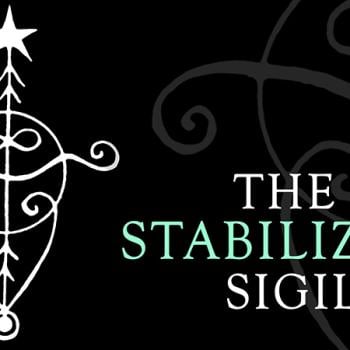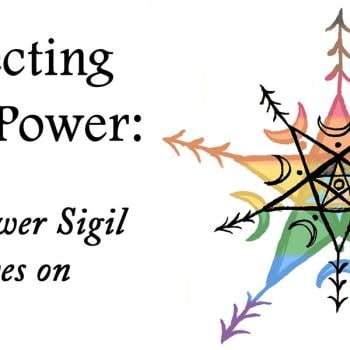Typically in the realm of Paganism, one either sees deities capable of growth and change throughout time: expanding or morphing how they are known, or one sees deities as unchanging, forever carved in stone. Experience has squarely placed me in the former camp, time and time again. And so I’m sharing with you how and why I see Medusa as a modern deity of the arts.
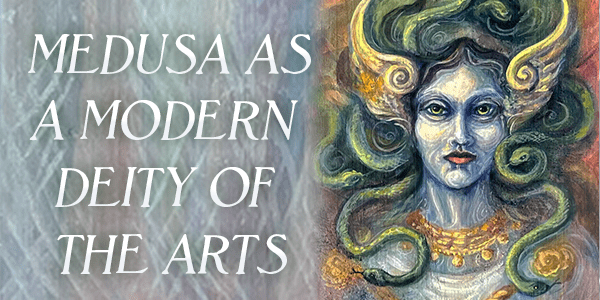 In the Beginning – Finding a Deity
In the Beginning – Finding a Deity
Some background to our story: I am the curator of a relatively new esoteric art gallery called Third Sanctum located in Warwick, Rhode Island. Our one-year anniversary will be this coming March, which is very exciting!
Even before opening, one of the things we knew we wanted to have in the space was an altar. But it has taken us awhile to decide where the altar needs to be and what goes on it. Especially since the altar needs to work with the revolving exhibitions plus the space is used constantly for classes, workshops, rituals, and other special events.
A few weeks ago, we found just the right spot that satisfies our needs. So with that major part taken care of, the next question is deciding who or what goes on the altar. Considering that the location of the altar was decided during a discussion of Fortuna (goddess of fortune and prosperity), that was a given. But we also needed something or someone to represent the arts.
You would think as an artist that I would have a specific deity already in mind, but it wasn’t that easy or obvious. I work with a wide variety of deity and spirits, and there’s no single one that I consider personally in that specific context.
So I did what any modern Witch would do and googled “goddess of the arts.” Which yielded some of the results I had already thought about but weren’t the right fit. But then there was Athena, listed at the top as “goddess of the arts and crafts.” Looking a little deeper into that I found her described as a “patron of useful and decorative arts and sciences” (among her many other attributions such as the goddess of war and of wisdom). That’s quite a loaded set of words that makes some implied judgements about the arts – and who does them. It’s fascinating how things that have directly led to the advancement of humanity intellectually, spiritually, and physically are often relegated to “decorative” (non “useful”) or not-as-important because they were done largely by women. I could write almost a whole book about that. In fact I did. (link to Visual Alchemy).
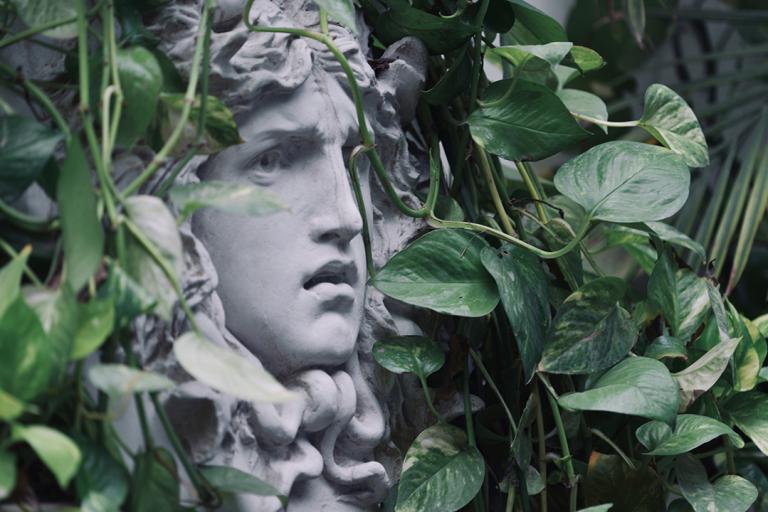
I’m quite familiar with Athena but she also didn’t feel like the answer I was looking for in regards to our gallery altar. However, thinking about Athena brought Medusa to mind. Almost as if Athena was saying, “close, but look deeper.”
Looking Deeper, into Stone
Medusa is linked to Athena as she a priestess in Athena’s temple when she was raped by Poseidon. Some say Athena cursed her with hair of snakes for this whereas others say the change was a gift of protection from the goddess. As I mention in the Gorgon’s Guide to Magical Resistance, popular mythology says that Medusa was one of three Gorgon sisters – the only one that wasn’t immortal. The Gorgons are said to represent perversion in its three from: Medusa (intellectual), Euryale (sexual), and Steno (moral). Medusa ended up being beheaded by Perseus (to satisfy a quest he was on), yet her head still possessed powers, particularly those associated with apotropaic magic. She has achieved immortality in other ways as her story and image have continued to live on and inspire throughout the centuries.
A Modern Medusa
So what does any of this have to do with the arts? In Medusa’s story, I see the relationship between the arts (especially visual arts) and modern society represented. Human advancement owes art so much in how our brains work, how we communicate, and how we create and design, and yet art is constantly demeaned, denigrated, and abused as unimportant, unnecessary, or only for the elite. Medusa’s rape by Poseidon in Athena’s temple symbolizes the patriarchal war on the spiritual, creative, and intellectual powers of humanity – everything that the arts represent and explore. Athena’s inspired gift of serpent hair became a way to defend those vulnerable yet vital aspects.
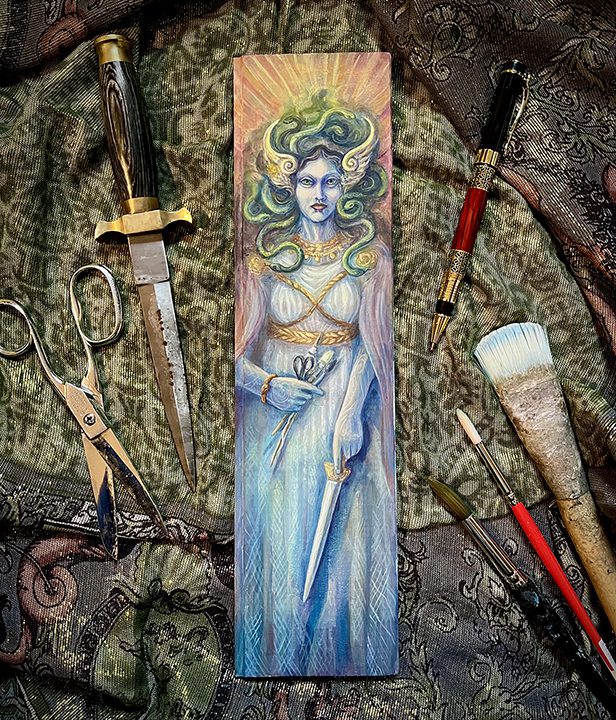
Medusa as the Gorgon representing the intellect means that she has a special connection to Athena’s attribute as a goddess of wisdom – so why not the arts as well, as they are interwoven. Just a quick glance at world mythology will yield multiple stories about how serpents, intellect, and creation are all linked. The story that her gaze could turn you to stone echoes the fears of the aggressive society that art could speak to us, change our viewpoints, and enable greater understanding and compassion- which in turn threatens the status quo. Don’t look, or it’ll change you! Medusa’s beheading was an attempt by the patriarchy to subvert the powers of art while also using them for their own means. The long-lasting apotropaic effects of her disembodied head prove the power of the arts to continue on in spite of the violence and attempts to silence.
I firmly believe that spirits and deities are fully capable of growth and change – that their stories aren’t static, pinned under glass like bugs in a dusty case – but ever-evolving with the rest of humanity. Medusa has definitely become a symbol of feminist rage, but I think she equally and most perfectly is the embodiment of the arts and a great defender of them. The more art and intellect are suppressed, the more humanity suffers. We are beyond the point of passive muses, we need a force to be reckoned with.
And so I hereby consider Medusa to truly be a modern deity of the arts. And her image will be joining Fortuna’s on our gallery altar.










